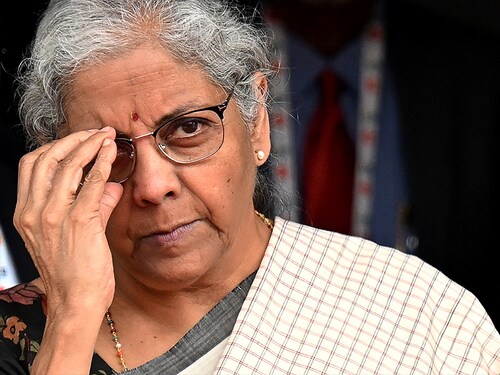Here's how Budget 2024-25 could lay down priorities for the next five years
This is a discussion on the need for unwavering commitment to eight key areas that will shape India's economic and social destiny


As India approaches the pre-poll Interim Budget announcement, the BJP-led government is expected not only to come up with a plan for the coming years but could also have underpinnings for the next 25 years leading up to the country's centennial of independence. On February 1, international attention will firmly rest on Finance Minister Nirmala Sitharaman. Even though this is a vote-on-account, a confident government that believes it will return to power after elections will use this opportunity to present a summary of its achievements so far and lay down the path for governance reforms and fiscal consolidation in the coming years. Moreover, it will aim to take a solid step in its quest to emerge as a preeminent destination for global investment and solve the problems of the global south. Under the stewardship of its government, India, the world's largest democracy with the most populous electorate, has navigated through a labyrinth of unprecedented challenges. Areas like the cost of doing business (compliance cost), inflation and jobs are challenges that will be mentioned. The upcoming budget, laden with substantial expectations, is anticipated to unveil a plan for India's "Amrit Kaal" – a defining 25-year period leading up to the nation's centennial of independence. The PM has already spoken about farmers, youth, women, and socially backward as critical for India, and one expects the budget to focus on them as well. I discuss the need for unwavering commitment to eight key areas that will shape India's economic and social destiny and will be critical for achieving this tall vision:
India's demographic dividend isn't merely a statistic, where half of the graduates still qualify as a potential solid workforce to be employed, but also economic drivers that need mobilising. Skilling initiatives need to be laser-focused on sectors like renewable energy and digital infrastructure, including AI, telecom and cybersecurity, which are collectively expected to witness a boom earning billions in investment and market size. Evergreen sectors of construction, MSME manufacturing and FMCG will also need support in reskilling and efforts towards a digital-like directory. Streamlining its labour laws, as seen in the recent fixed-term employment reforms, and incentivising startups in these high-growth areas can create not just jobs but high-value careers. Re-envisioning Skill India is something that could be on the agenda.
India's tech prowess is undeniable, but its deeptech ambitions require aggressive nurturing. The National Deeptech Startup Policy effectuates a good start to the process. India should have dedicated and increased allocation in GDP (benchmarking against global leaders like Israel's 4. 8 percent) to R&D in AI, robotics, space tech and quantum computing. The current allocation is less than one percent. The growing momentum around semiconductors suggests that India should pivot its policy focus to design and manufacturing rather than the current focus around assembly, especially when the former can avail the large talent pool. Other emerging trends like blockchain and web3 will also require an ecosystem of immense support, including industry collaborations, to redefine India as the global thought leader in innovation.
A 21st-century India needs a 21st-century government. Mission Karmayogi needs to be turbocharged, upskill bureaucrats in data analytics and digital governance, streamline processes through automation, and leverage technology for enhanced transparency. Proactive problem-solving platforms, similar to Singapore's 'Smart Nation', can foster public trust and gather valuable data for policymaking. This isn't just about efficiency; it's about establishing India as an international benchmark in good governance.
The agriculture sector can see a new wave of change. The Soil Health Card Scheme can tailor irrigation interventions and help optimise fertiliser use. The role of R&D, extension services, and rural physical infrastructure for the agriculture sector has been well documented. Cold chain facilities, previously introduced by 2016's Pradhan Mantri Kisan Sampada Yojana, need a greater push to reduce post-harvest losses, estimated at a staggering 22 percent. Access to finance also becomes crucial for farmers, including building more financial access points and focusing on implementable loan recovery strategies. Small farmers are more vulnerable, so dedicated support is needed for farmers with small holdings, especially those that use sustainable methods. All these are necessary criteria for realising the efforts towards doubling farmers' income and rural rejuvenation. FPO Scheme needs a push to become more effective on the ground.
India's infrastructure development is set for a significant surge, with spending expected to double to Rs143 lakh crore between fiscal years 2024 and 2030. The role of private capital in this growth phase is pivotal, with infrastructure sectors like roads, highways, renewable energy, and ports attracting investor interest, and further supported by policies and conducive investment climate. To sustain this, consistent policy support will be crucial, alongside a focus on timely execution. The future infrastructure landscape should likely incline towards larger, mega-scale projects. A combination of increased bond market activity, foreign investment, and bank lending will be essential to meet the massive funding requirements.
First Published: Jan 29, 2024, 11:46
Subscribe Now